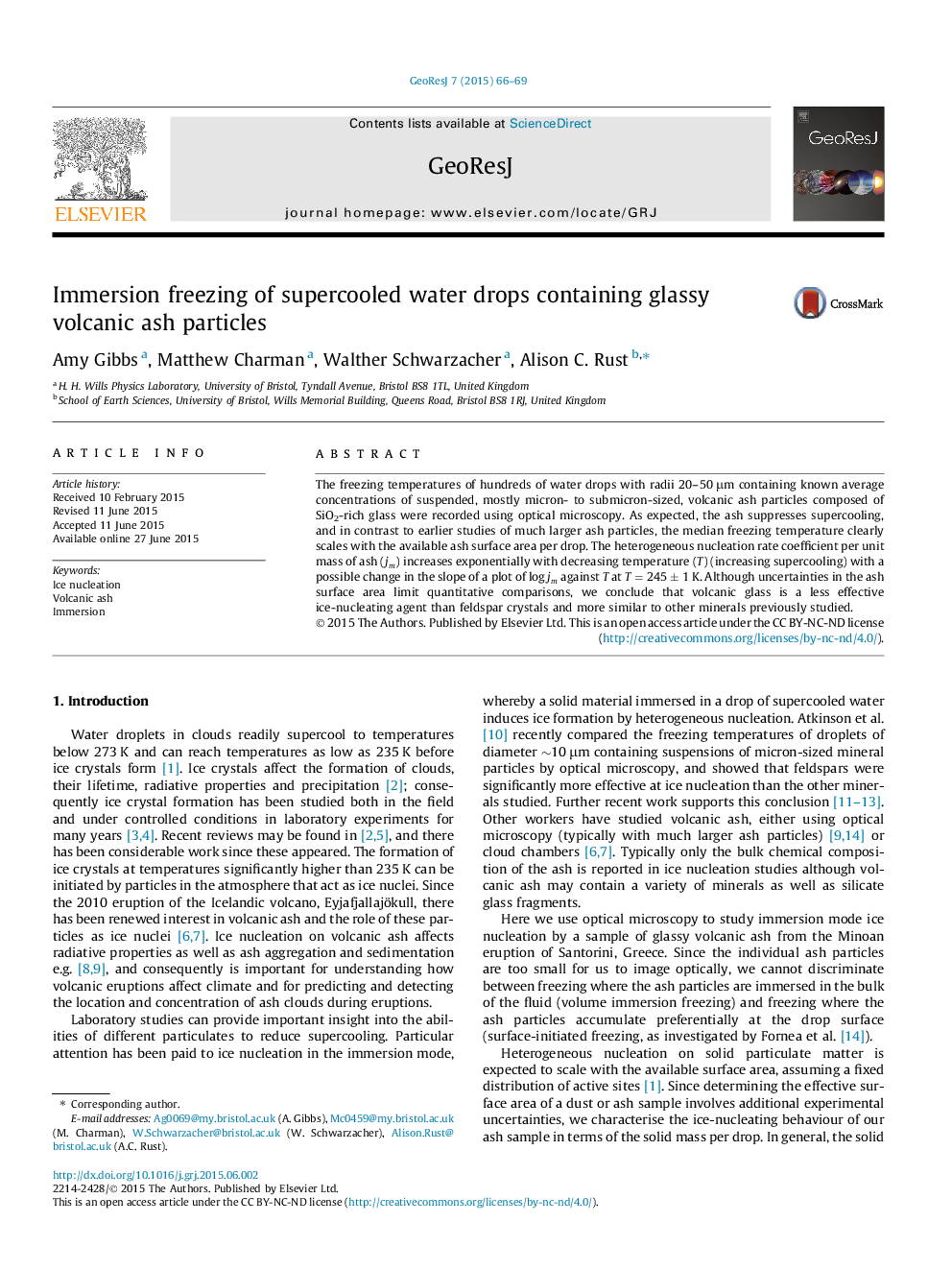| Article ID | Journal | Published Year | Pages | File Type |
|---|---|---|---|---|
| 4674481 | GeoResJ | 2015 | 4 Pages |
The freezing temperatures of hundreds of water drops with radii 20–50 μm containing known average concentrations of suspended, mostly micron- to submicron-sized, volcanic ash particles composed of SiO2-rich glass were recorded using optical microscopy. As expected, the ash suppresses supercooling, and in contrast to earlier studies of much larger ash particles, the median freezing temperature clearly scales with the available ash surface area per drop. The heterogeneous nucleation rate coefficient per unit mass of ash (jmjm) increases exponentially with decreasing temperature (T ) (increasing supercooling) with a possible change in the slope of a plot of logjmlogjm against T at T=245±1K. Although uncertainties in the ash surface area limit quantitative comparisons, we conclude that volcanic glass is a less effective ice-nucleating agent than feldspar crystals and more similar to other minerals previously studied.
